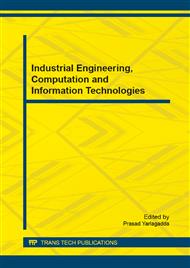p.8
p.13
p.18
p.24
p.30
p.36
p.40
p.44
p.50
Driver Fatigue Detection Algorithm Research Based on the Characteristics of Eyes
Abstract:
In driver fatigue warning system, it is a very effective method for detecting Driver fatigue state through the driver's facial expressions and body movements. The main content of this article is to detect the two basic states of the eyes opening and closing and presents the LBP texture detection operator. Firstly we get the face image sequences using infrared video and extract the eye region using ADABOOST. The SVM is used in classifying feature vector of the eyes open and closed detecting of driver fatigue. A large number of experimental results show that the proposed method has high detection accuracy and timeliness.
Info:
Periodical:
Pages:
30-35
Citation:
Online since:
December 2014
Keywords:
Price:
Сopyright:
© 2015 Trans Tech Publications Ltd. All Rights Reserved
Share:
Citation:


